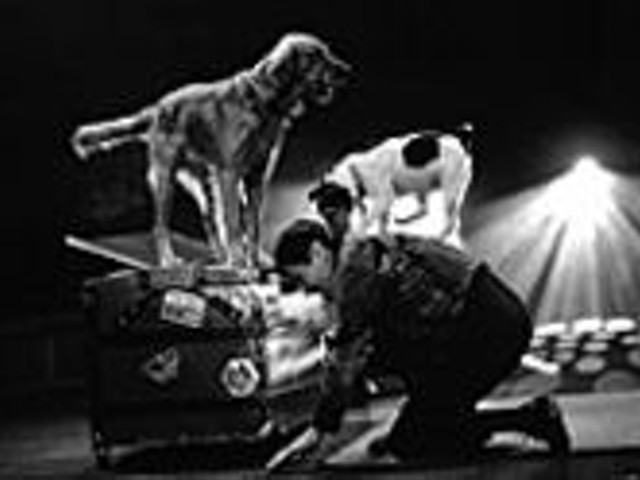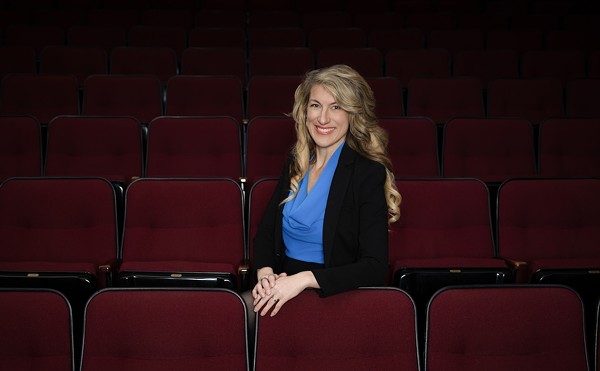In both Agnes and Angels, Bell overemphasized the mental frailty of his female characters. Proof does not escape this tendency to push actresses into exaggerating their symptoms of mental instability, and as a result the play's crucial relationship is rendered more confusing than compelling.
Having cared for her mentally ill father for more than four years, Catherine is understandably depressed and tired. His death frees her from stifling responsibility but forces her to face the future. Kelley Ryan plays Catherine initially as an unformed lump of exhaustion, slumping in shapeless clothes in an old rocking chair. She is credibly lost in her inner world, but her vocal inflections are oddly flat. When forced to face reality in the character of Hal, one of her father's former students now anxious to study the mathematician's final writings, she doesn't emerge enough to make any connections with him. Andrew Zaruba gives Hal enjoyable energy and passion; he's a complex character who is both intelligent and hip (and doesn't wear a pocket protector).
Auburn's script cleverly develops a romance between Catherine and Hal, but this production makes that romance nearly unbelievable. There's little for Hal to like in the Catherine we see in the first act, unless he's simply attracted to eccentric women who don't seem at all interested in him (or, for that matter, in much of anything). And although the script makes a big deal about their ages -- she's 25, he's 28 -- neither actor looks the appropriate age, which doesn't help matters any.
Flashback scenes in the second act give us glimpses of a younger Catherine, and here Ryan shines. Catherine's intellect and humor are compelling, and as she watches her father's mind disintegrate, her pain is palpable. In the difficult role of Robert, the father, Sam Hack works hard at showing us a formerly brilliant mind collapsing. But he never seems to really connect with his scene partners even in moments of sanity, and his repetitious vocal patterns and gestures add little to one's understanding of his character.
Rounding out the quartet of characters is Claire (Jennifer Zoole), Catherine's seemingly sane and successful sister. Her first encounter with Catherine after their father's death sizzles with guilt, blame and other fine sisterly emotions. Her take-charge attitude is a bracing wind destined to sweep away the dead leaves that have accumulated around the crumbling porch of the family home. (This porch is lovingly rendered in careful detail by Bell, who designed both set and costumes. His keen eye for visual elements is one of the best parts of this production.)
The play's crucial mystery -- whether Catherine wrote a brilliant new mathematical "proof" or stole it from her father -- is thankfully short on actual math and strong in dramatic tension. But this vital element isn't introduced until the final moment of the first act, which means that the development of Catherine and Hal's relationship is what must intrigue the audience for the first half of the play. Ryan and Zaruba portray their characters realistically, but Bell's direction fails to create a believable romance between them. The math problem and the theater problem are the same: The real work in fleshing out a mathematical proof is in making clear and compelling connections between seemingly disparate elements. The trick in making this Proof successful lies in precisely the same thing.





